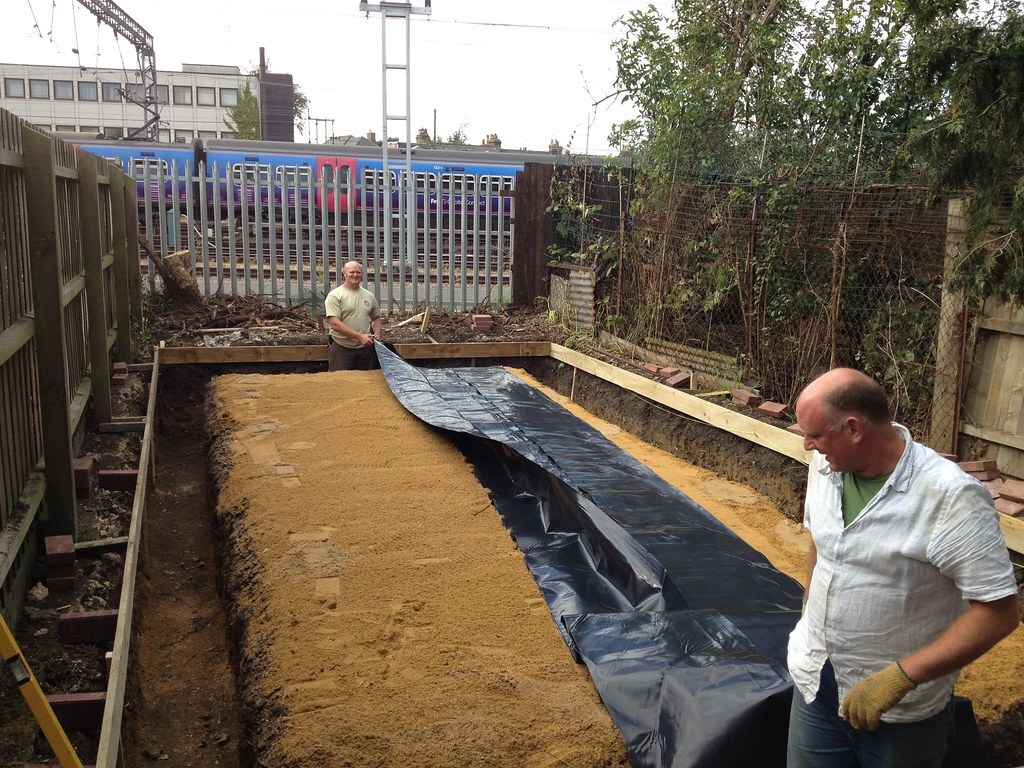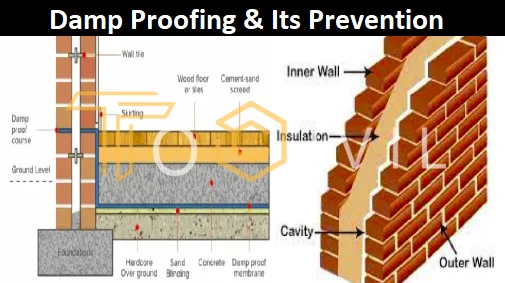Why damp removal newcastle is your best option against household mold
Checking Out the Different Techniques and Solutions for Effective Damp Proofing
Wetness in structures positions considerable difficulties to both architectural integrity and interior air top quality. Numerous techniques and services have actually emerged to combat this prevalent issue. From traditional damp-proof membranes to ingenious chemical treatments, each method uses unique benefits. Understanding these options is important for reliable dampness control. However, choosing the appropriate service relies on certain structure conditions and needs, triggering additional exploration into one of the most efficient wet proofing techniques readily available.
Understanding the Reasons For Wetness
Although wetness can arise from numerous sources, recognizing these causes is important for efficient remediation. Frequently, wetness originates from 3 main resources: increasing damp, passing through wet, and condensation. Increasing moist takes place when groundwater takes a trip up with permeable materials, such as brick or rock, usually because of a lack of an effective barrier (mould removal newcastle). Penetrating wet is generally triggered by external factors, including roofing leakages, malfunctioning seamless gutters, or harmed walls, enabling water to penetrate a building. Condensation, on the other hand, arises from excess wetness airborne, usually intensified by bad air flow and temperature level distinctions, leading to water droplets forming on surface areas. Determining these underlying issues is vital, as each type of wetness needs a customized approach for removal. Correct evaluation helps in figuring out the most effective options, eventually guarding the structural stability of a building and boosting indoor air top quality
Traditional Damp-Proof Membranes

Chemical Damp-Proofing Solutions
Chemical damp-proofing solutions supply a cutting-edge technique to avoid wetness invasion in buildings. These methods normally include the application of liquid chemicals that permeate masonry and develop an obstacle versus rising moist. Generally used chemicals include silanes, siloxanes, and other water-repellent representatives that react with surface area materials to produce a hydrophobic layer.The application procedure normally needs exploration holes right into the walls, injecting the chemical service, and permitting it to heal. This approach is especially beneficial for older frameworks where conventional damp-proof membranes may be impractical. In addition, chemical damp-proofing can be much less turbulent and much more cost-effective than substantial restoration projects.While efficient, these options depend upon appropriate application and ecological conditions for peak performance. Normal upkeep and monitoring are necessary to guarantee the durability of the damp-proofing treatment. On the whole, chemical damp-proofing represents a versatile choice for protecting structures against moisture-related damages
Tooth Cavity Wall Building And Construction Methods
Tooth cavity wall building and construction methods provide many advantages, particularly in wetness control and energy efficiency. By including an air space in between two layers of stonework, these walls successfully minimize water access while enhancing insulation. This combination not just secures frameworks from moisture however likewise adds to lowered power intake.
Advantages of Tooth Cavity Walls
When taking into consideration efficient wet proofing techniques, the advantages of cavity wall surfaces stick out prominently. Dental caries walls consist of two different layers, developing an air space that successfully reduces moisture infiltration. This style minimizes the danger of moisture, as the external wall serves as an obstacle against rain and water ingress. Furthermore, cavity wall surfaces improve thermal insulation, which adds to energy efficiency by decreasing warm loss. They likewise give audio insulation, assisting to develop a quieter indoor setting. Furthermore, the air gap permits air flow, which aids in wetness control and lowers the chance of mold and mildew development. These benefits not just boost the overall comfort of a building yet likewise add to its long life and architectural honesty.
Dampness Control Techniques
Effective wetness control techniques are vital in dental caries wall building to assure long-lasting protection versus moisture. One primary technique involves the consolidation of weep holes, which assist in water drainage from the dental caries, protecting against buildup. Additionally, making use of breathable membranes can aid take care of moisture levels while permitting caught vapor to run away. Correct positioning of insulation is also crucial, as it needs to not block drainage courses. In addition, making certain that the external leaves of the cavity wall surface are created with waterproof products improves total resilience. Regular upkeep checks are necessary to determine any clogs or damage early, guarding the structure's honesty. Ultimately, a mix of these strategies develops a robust defense versus wetness breach in tooth cavity walls.
Insulation and Power Efficiency
Insulation plays a vital role in enhancing power effectiveness within dental caries wall building. By incorporating insulating products, these walls develop a thermal barrier that reduces warmth loss and lowers power intake. Reliable insulation not only aids preserve a secure interior temperature level but additionally mitigates the danger of wetness, as it avoids condensation within the wall surface cavity. Different techniques, such as using stiff foam boards or mineral wool, can be used to attain perfect insulation efficiency. Furthermore, proper installation is necessary to assure that gaps and gaps are lessened, which can otherwise compromise power performance. Eventually, a well-insulated dental caries wall adds substantially to total sustainability and reduces home heating and air conditioning prices for house owners.
External Damp Proofing Approaches
Exterior moist proofing methods are important for securing frameworks from wetness infiltration. Two effective methods include the application of water-proof membrane layers and the setup of French drains. These options assist reduce water build-up and protect the integrity of buildings.
Waterproof Membrane Layer Application
While numerous methods exist for protecting against dampness ingress, the application of waterproof membrane layers stays a very reliable exterior damp proofing technique. These membrane layers are commonly made from materials such as polyethylene, rubber, or customized asphalt, offering a durable barrier against water infiltration. The installment process includes using the membrane layer to the exterior surface areas of structures or wall surfaces, making sure total insurance coverage to stop leaks. Correct adhesion and sealing at joints are vital to making best use of effectiveness. Water resistant membrane layers can be used in numerous types, including fluid layers and sheet membrane layers, allowing for adaptability based on the certain needs of the structure. This approach not only protects structures from moisture yet likewise enhances their longevity and architectural honesty.
French Drain Installation
One effective approach for handling groundwater and avoiding wetness accumulation around a building's foundation is the setup of a French drain. This water drainage system includes a trench loaded with gravel and a get more info perforated pipeline that reroutes surface area water far from the structure. Correct installment requires cautious preparation, making sure that the drainpipe slopes far from the framework to help with ideal water circulation. Furthermore, the area of the drain is important; it needs to be placed in locations prone to merging or excess moisture. Routine upkeep, including clearing up debris from the crushed rock and guaranteeing the pipe continues to be unblocked, is necessary for long-term effectiveness. Ultimately, a well-installed French drainpipe can considerably reduce the danger of water-related issues in cellars and foundations.
Interior Waterproofing Techniques
Inside waterproofing techniques are essential for shielding a building's inside from wetness infiltration and potential water damage. These approaches generally include the application of specific products and strategies created to produce a dampness obstacle within the structure. One common strategy is the use of water-proof finishings or sealants on wall surfaces and floors, which stop wetness from penetrating surfaces.Additionally, mounting interior drainage systems, such as sump pumps, can successfully take care of water accumulation in basements and creep rooms. An additional approach entails using vapor barriers, which are set up to inhibit wetness movement from the ground into living spaces.Moreover, dealing with any fractures or spaces in walls or structures with ideal sealers ensures a detailed defense versus water intrusion. By carrying out these interior waterproofing techniques, homeowner can considerably lower the threat of mold development, structural damages, and other moisture-related problems. Correct implementation of these strategies is necessary for lasting protection and building integrity.
Routine Maintenance and Evaluation Practices
Normal upkeep and inspection methods are crucial for guaranteeing the long-lasting performance of moist proofing options in any structure. Regular checks make it possible for building owners to recognize early indicators of dampness intrusion, such as peeling off paint, mold and mildew development, and stuffy smells. These indications can signify underlying concerns that call for prompt attention.Inspections need to be carried out at the very least annually, concentrating on vulnerable locations like cellars, crawl rooms, and exterior wall surfaces. During these assessments, residential or commercial property owners must check out sealers, drain systems, and ventilation to validate they work correctly.Additionally, keeping downspouts and gutters is important, as stopped up systems can cause water accumulation near the foundation. Carrying out a normal upkeep schedule, in addition to prompt repairs, can significantly prolong the lifespan of damp proofing actions and shield the structural stability of the building. Aggressive procedures eventually add to the total health and wellness and safety and security of the living setting.
Regularly Asked Concerns
Exactly How Long Does Damp Proofing Normally Last?
The period of moist proofing efficiency differs, typically lasting between 20 to half a century. Variables such as application quality, ecological problems, and maintenance methods greatly influence the durability of the wet proofing therapy.

Can I Damp Evidence My Home Myself?
The private contemplated the feasibility of do it yourself damp proofing. With proper research and the appropriate materials, it is possible. However, they additionally recognized the significance of expert advice to guarantee resilient performance and protect against future issues.
What Are the Signs of Inefficient Damp Proofing?
Indications of ineffective moist proofing consist of persistent moldy smells, noticeable mold and mildew growth, peeling off paint, wet spots on wall surfaces, and wood decay - mould treatment newcastle. House owners ought to deal with these issues quickly to stop further damage and health worries
Does Damp Proofing Affect Indoor Air Top Quality?

Just How Much Does Professional Damp Proofing Cost?
Specialist wet proofing expenses differ significantly, typically varying from $1,000 to $5,000 relying on the residential or commercial property's dimension, the degree of the wet issue, and picked approaches. Each situation requires a customized evaluation for precise prices. Generally, moisture stems from 3 main sources: climbing moist, permeating wet, and condensation. When considering effective moist proofing techniques, the benefits of tooth cavity wall surfaces stand out prominently. External moist proofing methods are important for protecting structures from moisture seepage. While various techniques exist for protecting against moisture ingress, the application of water resistant membrane layers remains a very effective outside damp proofing method. Indicators of inefficient wet proofing include relentless musty smells, noticeable mold and mildew growth, peeling off paint, damp spots on wall surfaces, and timber degeneration.